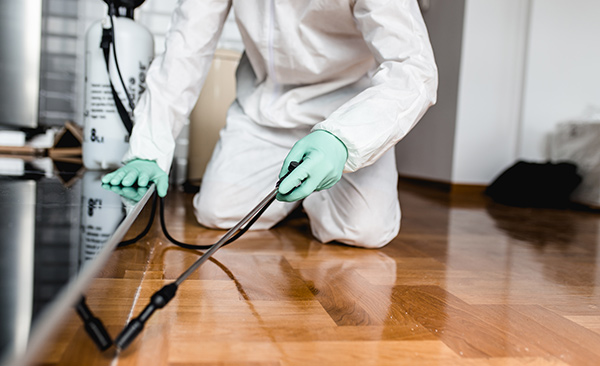Prevent infestations with expert Pest Control treatments that work effectively.
Prevent infestations with expert Pest Control treatments that work effectively.
Blog Article
Eco-Friendly Bug Control Approaches for Handling Wild Animals in Urban Locations
Urban areas often locate themselves at the crossway of human activity and wildlife, leading to one-of-a-kind challenges in insect administration. These methods not just protect the environment yet also improve neighborhood involvement in wildlife administration. As metropolitan populaces continue to grow, recognizing the dynamics of wild animals communications comes to be increasingly important.
Understanding Urban Wildlife Characteristics
Understanding Urban Wildlife Dynamics is crucial for establishing reliable and environmentally friendly parasite control approaches. Urban areas are progressively ending up being environments for numerous wild animals species, driven by aspects such as habitat fragmentation, food schedule, and human infringement. Recognizing these characteristics enables for a nuanced strategy to pest management that straightens with ecological principles.
Urban wild animals commonly includes types such as raccoons, squirrels, and birds, which adapt to city atmospheres, locating specific niches in environment-friendly areas, parks, and also domestic areas. Their existence can bring about conflicts with human beings, particularly when they manipulate personnels for food and sanctuary. Understanding the habits and eco-friendly roles of these types educates strategies that lessen negative communications while promoting biodiversity.
Moreover, acknowledging the interdependencies within city environments assists in identifying essential areas for habitat conservation and repair. This understanding adds to the growth of integrated pest monitoring (IPM) strategies that take into consideration the environmental balance, consequently reducing dependence on hazardous chemicals. By promoting coexistence in between human beings and urban wildlife, cities can create much healthier atmospheres that profit both homeowners and regional communities, leading the way for sustainable urban living.
Natural Repellents and Deterrents
Natural repellents and deterrents provide a lasting option to traditional parasite control approaches by utilizing the power of nature to maintain undesirable types at bay. These eco-friendly options typically utilize plant-based ingredients, essential oils, and various other normally taking place materials that discourage parasites without harming the setting.
One reliable all-natural repellent is peppermint oil, which is understood to ward off rodents and insects. Its solid fragrance is unpleasant to many parasites, making it a preferred option for urban setups. In a similar way, vinegar and citrus peels can offer as deterrents, as their solid odors are normally unattractive to various wildlife.
Furthermore, diatomaceous earth is a natural powder that can be spread out in locations vulnerable to parasite task, properly drying out and hindering bugs without posing risks to non-target species. Garlic sprays and neem oil are recognized for their ability to ward off a broad range of insects, including both pests and bigger wildlife.
Applying these natural repellents not just decreases dependence on chemical pesticides however also advertises a much healthier metropolitan environment, fostering a more balanced conjunction in between humans and wild animals. By using these methods, city locations can successfully manage bug populations while lessening environmental impact.
Habitat Adjustment Techniques
Reliable environment adjustment methods play a crucial function in lasting parasite management by altering the environment to make it much less helpful to pest infestations. By recognizing the ecological characteristics of city areas, homeowner can apply critical modifications that hinder insects while advertising biodiversity.
(Mouse Control)One main technique entails maintaining appropriate sanitation. This consists of regular waste removal, safeguarding trash bins, and removing standing water to reduce reproducing sites for pests and rats. Additionally, landscaping practices such as choosing indigenous plants can enhance environmental balance, supplying environments for valuable microorganisms while reducing resources for pests.
An additional vital technique is to seal entrance factors in structures. Inspecting and fixing fractures in structures, walls, and windows can dramatically decrease pest gain access to. Furthermore, producing physical barriers, such as fences or plant buffers, can prevent wildlife activity into human-inhabited areas.
Integrated Parasite Administration Practices
Building upon environment adjustment strategies, integrated insect administration (IPM) techniques offer an all natural strategy to managing pest populaces while minimizing environmental influence. IPM combines different strategies, consisting of organic, cultural, mechanical, and chemical controls, to attain effective insect monitoring.
Biological control entails the introduction of all-natural predators or parasites to minimize bug populaces. Social practices, such as plant turning and sanitation, disrupt pest life process and diminish their environments - Pest control service. Mechanical controls, like traps and barriers, supply immediate relief from insect stress without chemical intervention
Chemical controls are made use of as a last resource, concentrating on targeted applications that restrict harm to non-target types and the setting. The option of eco pleasant pesticides, when necessary, is indispensable to the IPM framework. Additionally, monitoring insect populations and evaluating potential damage assists inform decision-making, ensuring that interventions are prompt and reliable.
Neighborhood Participation and Education

(Rodent control Port Charlotte)Workshops and informational sessions can outfit residents Silverfish control Port Charlotte with understanding regarding native species, habitat preservation, and reliable non-toxic bug management techniques. Collaboration with colleges, neighborhood companies, and federal government companies additionally improves educational outreach, ensuring that essential info gets to diverse target markets.
Furthermore, community-led campaigns, such as area clean-up days and habitat restoration tasks, not just promote biodiversity yet also strengthen area connections. Pest control service. By urging homeowners to share their experiences and monitorings, areas can create targeted methods that deal with details neighborhood bug issues
Integrating responses from locals right into pest management plans enables a much more receptive and adaptive strategy to wild animals obstacles. Inevitably, notified and engaged areas are vital to achieving long-term success in eco-friendly parasite control, bring about healthier city environments that appreciate both human and environmental requirements.

Final Thought
In final thought, eco-friendly insect control comes close to offer sustainable options for handling metropolitan wildlife. By prioritizing habitat alteration, making use of natural repellents, and applying integrated parasite monitoring methods, communities can foster an unified coexistence with regional animals.
Report this page